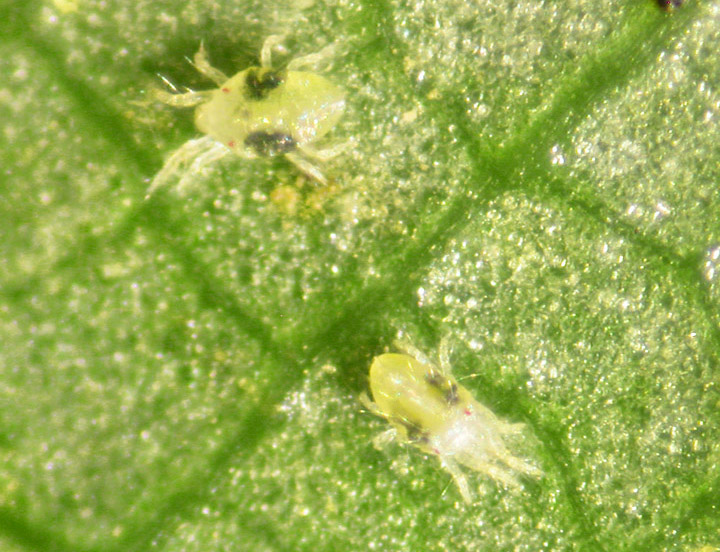Spider Mites


Hosts
All fruit trees
Biology
Mites are very small arthropods that are more closely related to ticks than insects. European red mites overwinter as black eggs on tree limbs and, if abundant, can cause feeding injury early in the season. Two-spotted and McDaniel spider mites overwinter as adults on lower trunks and in groundcover, and may become a problem during hot, dry conditions in the mid and late summer when they reproduce rapidly (1-2 weeks to complete a generation).
Symptoms/Damage
Stippling on leaves due to removal of chlorophyll and sap; severe feeding causes “mite burn.” Spider mites produce fine silk webbing that becomes apparent when populations are high.
Monitoring
Before budbreak, look for European red mite egg masses on tree bark and near buds. In late spring, watch for stippling damage on lowest interior leaves first. Shake limbs over cloth tray.
Treatment Threshold
Start monitoring 5 weeks after bloom and treat if average number of mites per leaf is greater than 10 (apple and cherry) or 5 (pear).
Degree Day Model
None
Management Considerations
In addition to plant-feeding mites, there are predatory mites that feed on spider mites. Predatory mites can provide effective biological control if they aren’t harmed by pesticides. Low populations of spider mites can be ignored and are often kept in check by the predatory mites.
Spider mite outbreaks often follow pesticide applications that upset the predator-prey balance. Resistance to chemicals is common, so miticides should not be used repeatedly. Applying insecticidal soap or horticultural mineral oil every 5-7 days until mite densities decline can be effective. Avoid applying soaps or oils during the hot part of the day as some leaf burn may result.

